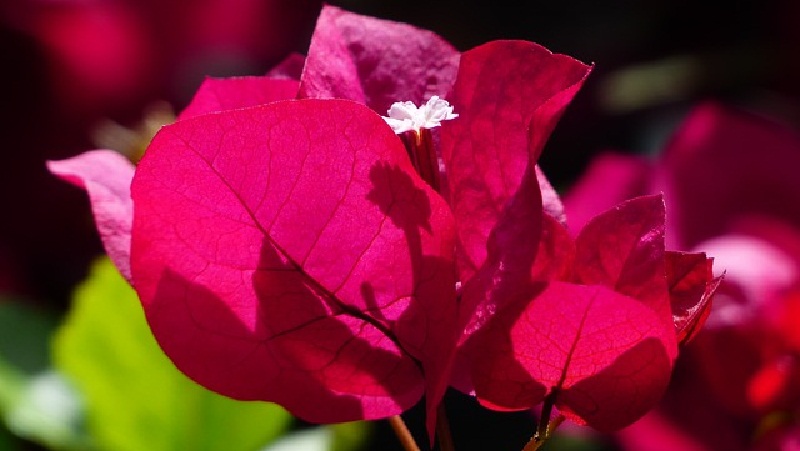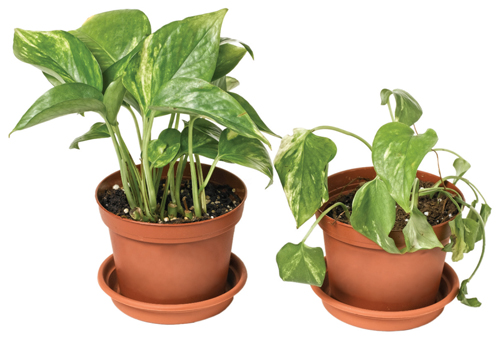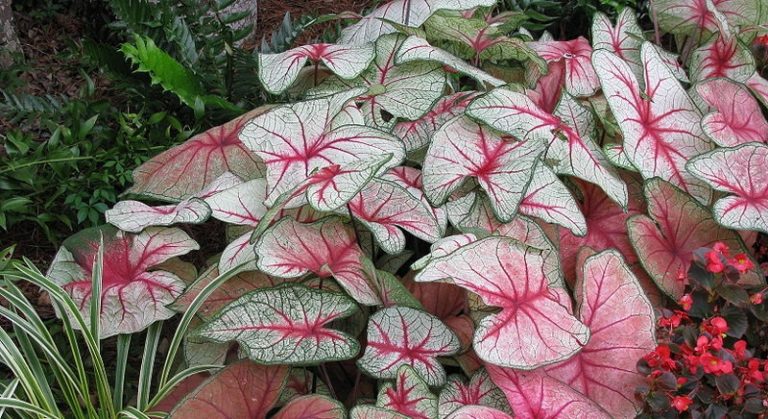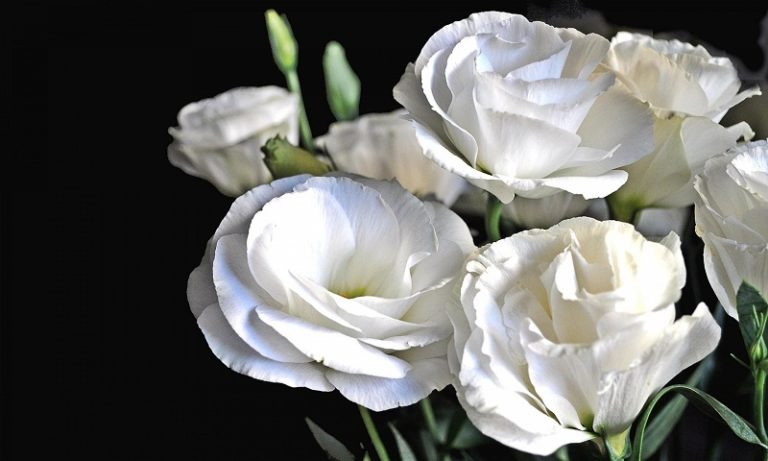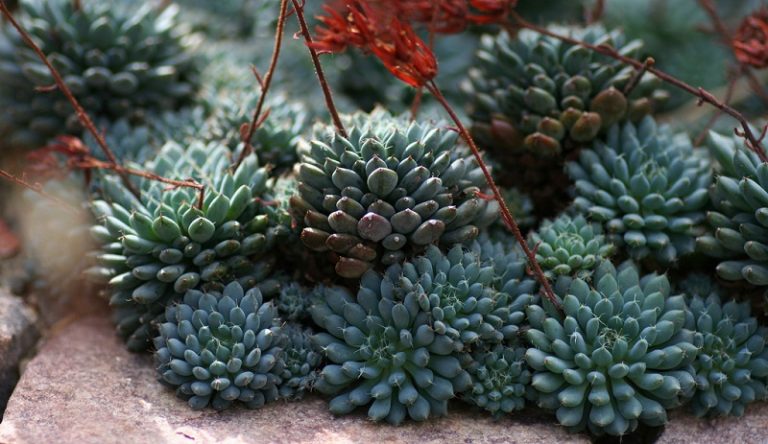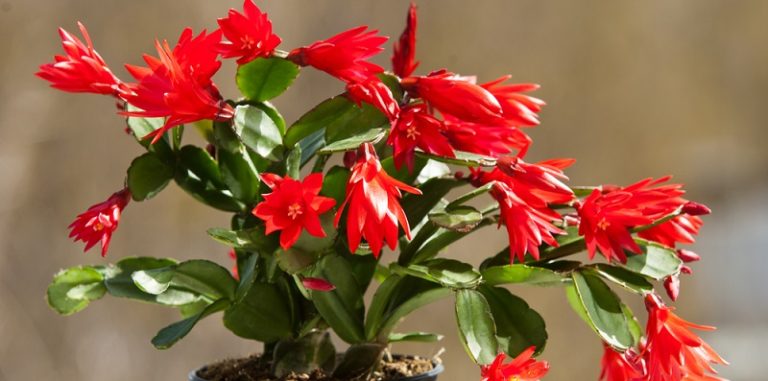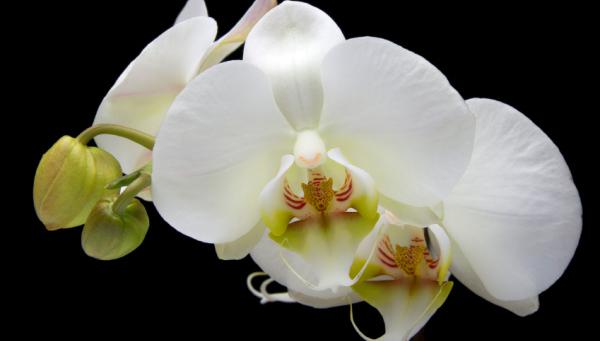Bougainvillea. Care and reproduction
Bougainvillea (Bougainvillea)a perennial plant that grows as a vine, or as a tree. Bougainvillea shoots are rarely covered with thorns with which the plant clings to a support. This plant belongs to the nictagine family. In bougainvillea, the leaves are oval, pointed at the end, up to 7 cm long, the flowers are tubular, very small, yellowish in color, and quickly fade. The plant is decoratively given by colorful bracts – bractae, resembling transparent paper with dark veins. Bracts in shape are round-triangular or heart-shaped, the size of the bract reaches up to 5 cm, they are very bright and can be of different colors. The flowers fade quickly, and the bracts adorn the plant for a very long time. Bougainvillea shoots grow very quickly, the annual growth of shoots reaches up to 5 m (subject to natural cultivation). At home, bougainvillea also gives a good increase of up to 1m, if properly cared for.
In the natural environment, it can be found in the South. America. Bougainvillea comes in the form of a vine or in the form of a tree, but most often it can be found as a climbing bush with flexible shoots creeping upwards that cover a house or terrace.
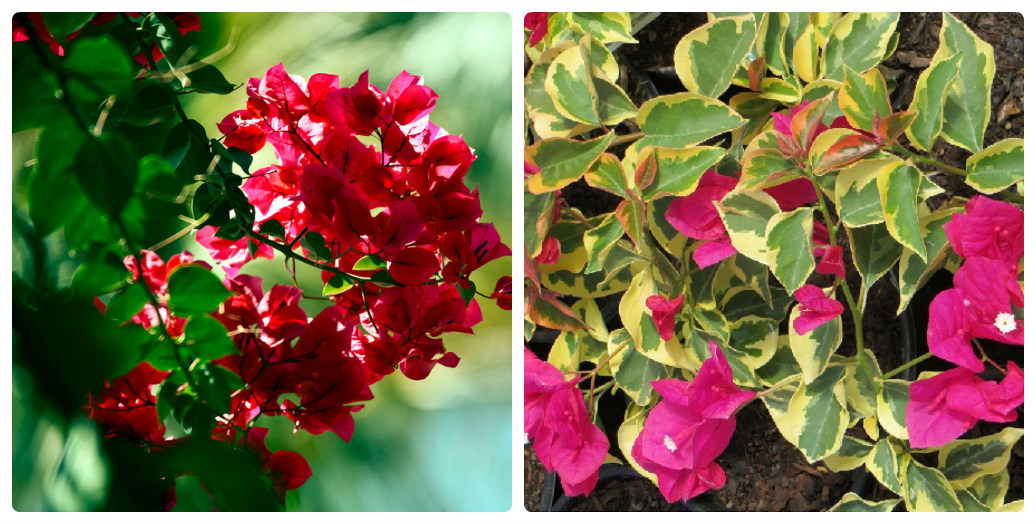
Types of bougainvillea
The genus Bougainvilleaand is represented by 15 species, of which only a few are suitable for growing indoors. Bougainvillea of Brazilian species Ougainvillea Glabra and its varieties, which are adapted to room conditions, are suitable for growing indoors.
- Bougainvillea Spectabilis. This type of bougainvillea is distinguished by decorative bracts and colored leaves.
- Introduction. It tolerates pruning well. The bush can be given almost any shape.

In our climatic conditions, bougainvillea is grown as a houseplant, or in greenhouses, it is afraid of the slightest frost.
Bougainvillea care
Caring for bougainvillea is easy if you follow all of the conditions listed below.
Light brightness for bougainvillea
Bougainvillea is a light-loving plant, it loves a lot of light, sometimes direct sunlight, but it is better to shade the plant from the midday sun. Place the plant on the western, eastern windows, and on the south sides of the house, place the plant away from the window. With insufficient lighting, the shoots are strongly stretched, the leaves turn pale, flowering stops.
Bougainvillea reacts painfully to changing climatic conditions, so do not move the plant to another place unless it is necessary. Bougainvillea can shed not only flowers and bracts, but also leaves. This plant is capricious. If the lighting and air temperature in the new place almost do not differ from the previous one, after a short time the leaves will begin to grow.

Air temperature for bougainvillea
Active growth of the plant occurs in spring-autumn, during this period the temperature in the room should be up to 25 ° C, it is best to take the bougainvillea outside. And in winter, it is at rest, during this period it is advisable to lower the temperature to +10-+13°C (hypothermia of the earthen lump is not allowed). Indoor bougainvillea fears drafts, especially watch out for bougainvillea in winter so that it does not get a stream of cold air.
Watering and humidity for bougainvillea
At home, special attention should be paid to watering bougainvillea. In the warm season, it is watered as the topsoil dries up – 1-2 times a week. In its natural environment, bougainvillea grows on the rocky soil of mountain slopes, so it does not tolerate stagnant water. Be sure to drain the water from the pan after watering so that the roots of the plant do not rot. In winter, the plant is rarely watered so that the earth does not dry out.
Bougainvillea loves high humidity, in the warm season you need to spray it 2 times a day, spray with soft water so that water does not fall on the bracts. If the room temperature is below + 15°C, then you do not need to spray.

Feeding bougainvillea
You need to feed bougainvillea 1 time in 7 days during the period of active growth, alternating organic and complex mineral fertilizers (for flowering ones). In winter, bougainvillea does not need to be fed, because it is at rest.
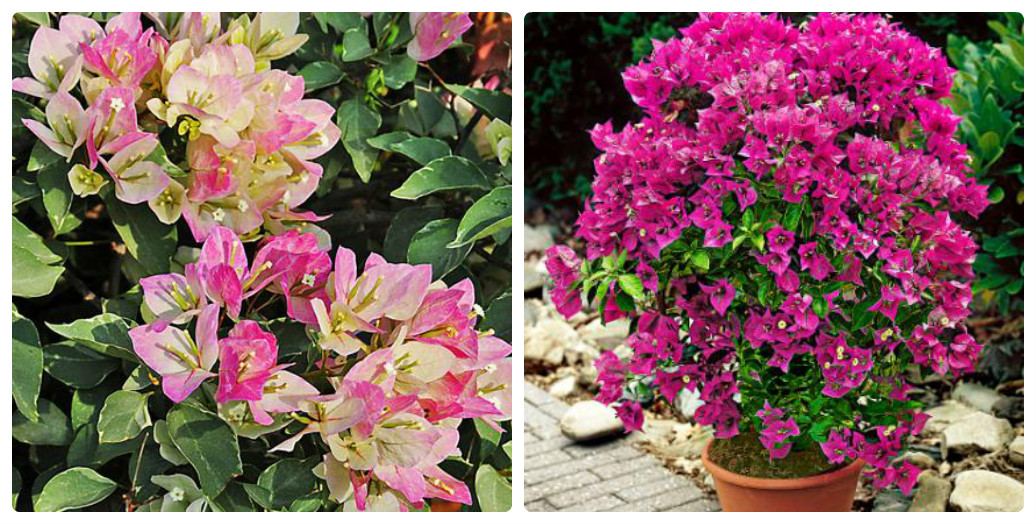
How to transplant bougainvillea
Pot selection
The pot should be small – from 2 to 6 liters. In large pots, bougainvillea grows actively, forming dense greenery, but blooms worse than in a cramped pot. In large pots, bougainvillea is grown only in a greenhouse where there is enough light for the normal development of the plant.
Soil for bougainvillea
The soil for bougainvillea should be light and sufficiently nutritious, moisture-permeable, with a neutral or slightly acidic reaction. Soil mixture for bougainvillea can be bought or prepared with your own hands. It should consist in equal proportions of puffy earth and coarse sand, with the addition of vermeculite, perlite, expanded clay.
Bougainvillea transplant
You need to make a hole in the pot to drain excess water. At the bottom of the pot, pour expanded clay from 2 to 5 cm, depending on the volume of the pot. We pour the soil, the layer of which should be 3-5 cm, transplant the bougainvillea by transshipment (do not disturb the earthen lump of the plant). There should be up to 3 cm of free space between the roots and the walls of the pot, which we carefully fill with fresh substrate.
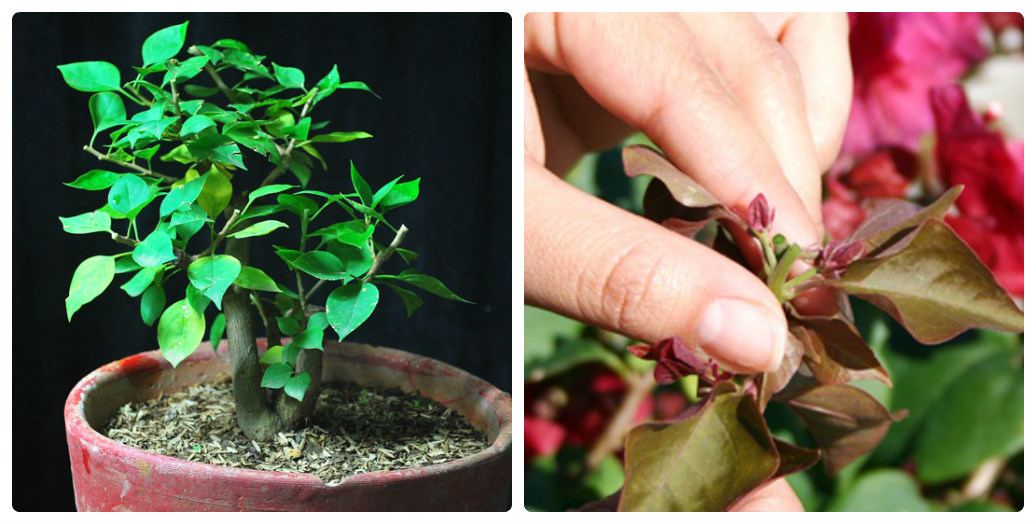
How to prune bougainvillea
An important point in caring for bougainvillea is annual pruning.
Autumn pruning. First of all, we cut off dry damaged branches. To make the bushes decorative and more lush, in the fall (before the beginning of winter) the shoots are cut to half the length. This stimulates the growth of lateral shoulder straps.
Spring pruning. In the spring, very thin, curved, extra shoots are cut off, and too long branches are shortened to half. Form a crown.
Summer pruning. In summer, young branches are pruned immediately after flowering, flowers with decorative bright bracts will reappear from young lateral shoots.
Note! Shoots of 3-4 year olds are not pruned, because very few dormant buds awaken on old woody branches, and new side shoots do not grow.
Lavender comes in pink, purple, white, and even yellow.
How to propagate bougainvillea
Bougainvillea propagates by cuttings and layering.
Features of propagation by cuttings
In spring, semi-woody apical cuttings (shoot tops) up to 10 cm long (which remain after pruning) are used for rooting. Cutting shoots and planting is carried out in the same way as propagating hibiscus by cuttings.
Diseases and pests
When grown at home, bougainvillea is more susceptible to pest infestation than in the natural environment. These are aphids and mealybugs, spider mites and whiteflies.
If bougainvillea is not properly cared for, it can get various diseases.
- Fallen leaves and bracts – change of place, draft, stagnant water, or overdrying of the soil, dry air, too little light
- Bougainvillea does not bloom – too large a pot, a disturbed dormant period, lack of light, too low air temperature.
- Bougainvillea dies– overflowing, roots rot (transplant the plant into completely new soil, wash off the old one and remove rotten roots), frost.

